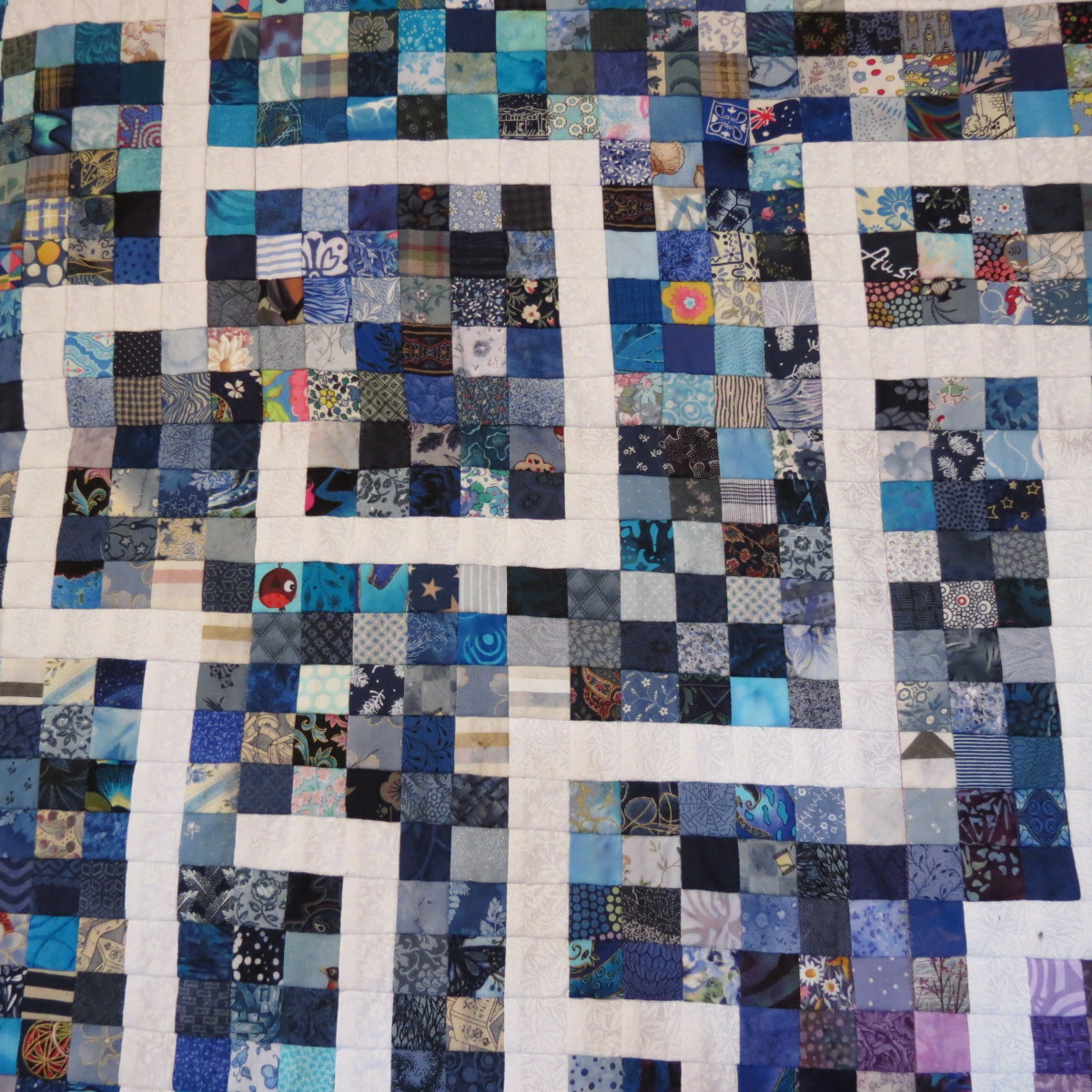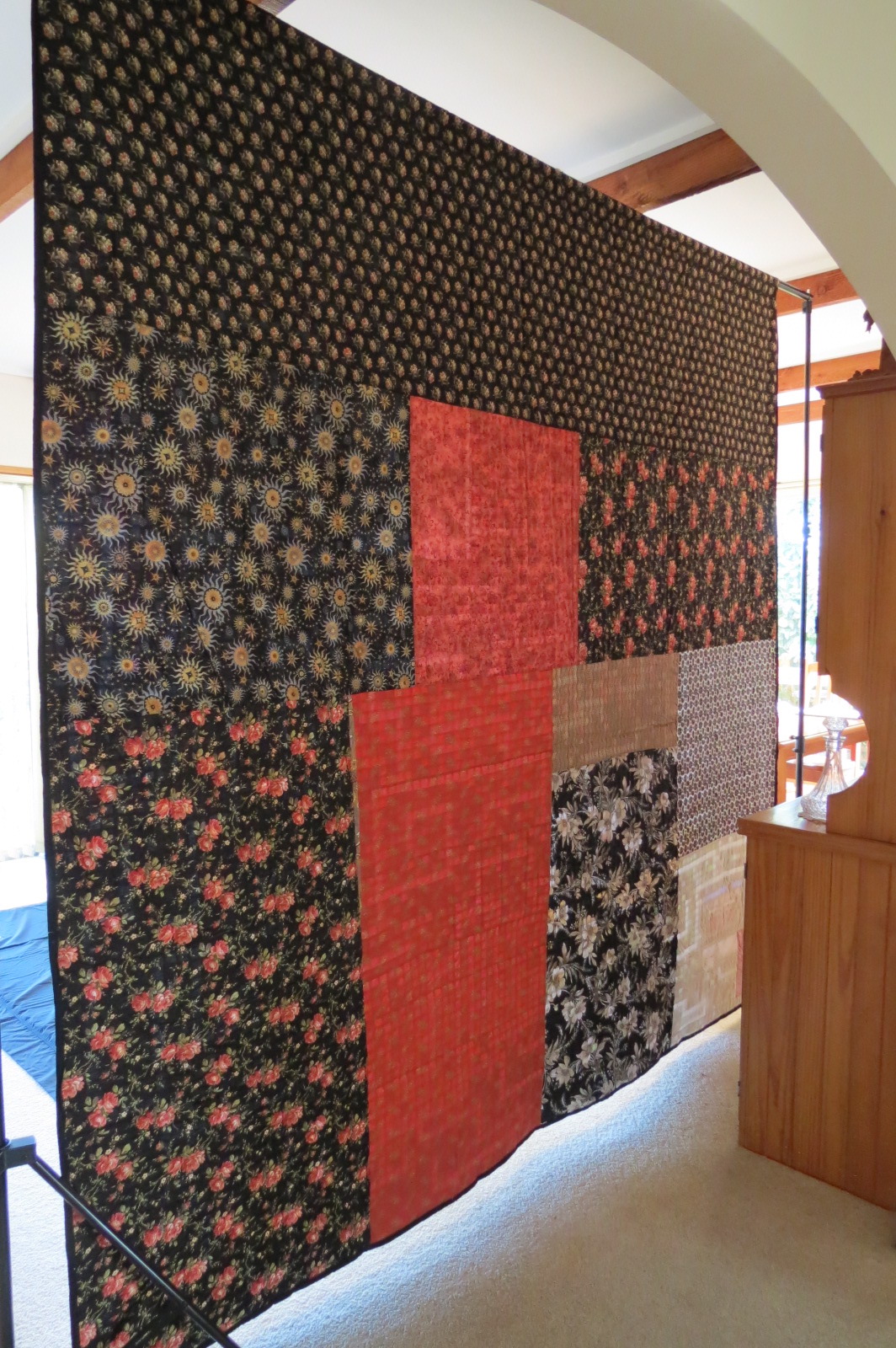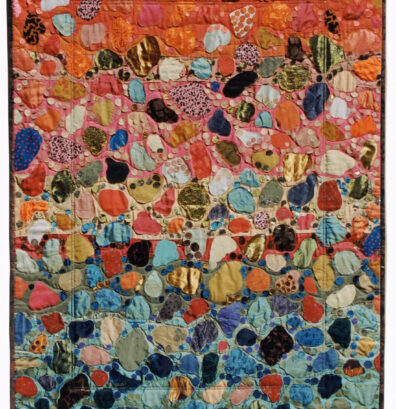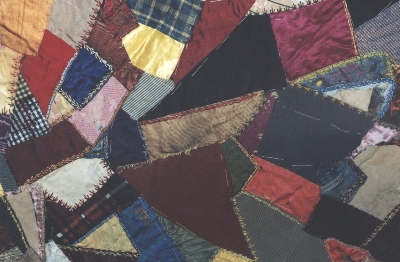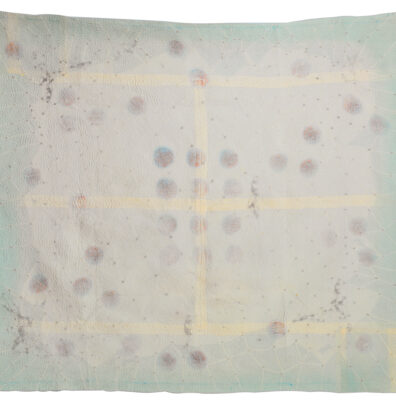-
Owner:
Margaret Rowe-Keys -
Location:
private collection -
Maker:
Margaret Rowe-Keys -
Dimensions:
Height: 100"
Width: 100"
History
LOST, 1915
A WWI Commemorative Quilt for the Gallipoli Campaign
A quilt by Margaret A. Rowe, 2015
The Australian Challenge Quilt series began in 2008 after I had been nagged for a year by a good friend to write an Australian novel for Australian quiltmakers. I wanted to present Australian patchwork and quilting history in an interesting way, which resulted in the characters in the books gaining this information from a guest speaker at their guild meeting and then being challenged to make a quilt referenced by what they had just learned. I found that in order to write about the characters’ reactions to the challenge it was best if I undertook each challenge myself, resulting in numerous quilts being created.
Part of my storytelling is to describe the quilts made by the characters: pattern design, block layout, colours and fabrics. The sixth book in the series, The Rebecca Challenge Quilt, includes historical information about Australian commemorative quilts. Lost, 1915 was the quilt I chose to create in memory of the Anzacs. As we began commemorating the centenary of World War I and the Gallipoli campaign I reflected on how grateful I was that my own grandfather had survived and returned home. But what of all those lost men? I wanted to commemorate each and every one of them by representing them as individuals in one quilt. This led me to the idea of one piece of fabric for each man, and as there were too many to commemorate both Australia and New Zealand, I focused on the 8,709 Australians who were lost during the Gallipoli campaign. The image of men scurrying through trenches brought to mind the idea of a maze, and the concept for the quilt quickly came together.
It took me three attempts to draw the pattern for the maze, because it was important to me that there was one coloured square for each of the 8,709 soldiers. I asked quilting friends to give me scraps from their stash so I could gather as many different fabrics as possible to represent all those individuals who made up our troops. These were provided willingly and not without much effort by several women, which reflected the Aussie mateship that was born from our Anzacs. It made me very proud.
The maze, representing the trenches, begins at the house and bends its way around the quilt until it reaches the Australian War Memorial block. This imitates the journey of the soldier, from the green pasture of his comfortable home and family life, through the brown mud of the battlefield and the horrors of war, until he passes through the red poppies of remembrance to the place where now his name is immortalized in bronze on our roll of honour at the AWM. The maze contains 100 bends to represent 100 years since the Gallipoli campaign, and there are 70 dead-end paths to acknowledge the 70 men taken prisoner there. Within the coloured squares, one for each man, are the colour patches for each of the battalions who fought at Gallipoli. In the end, due to the number of seams, the quilt measures exactly 100” square – an eerie stroke of serendipity for a centenary quilt.
A late start to the project and a looming deadline for its completion meant that I had to make this quilt in 49 days, working an average of ten hours a day and only taking a day or two off for a break. While a sat at my machine for hours on end, sewing row after row after row of stitching, my back burning with pain, I turned my thoughts to the men in the trenches at Gallipoli and remembered I was doing this because I wanted to do it, because I wanted to remember them, and then it was easy to ignore my own pain and concentrate on their memory. Lest we forget.
Description
Postage stamp pattern with white squares creating a maze from a pieced house block to an appliqued block depicting the Australian War Memorial. The quilt measures 100" x 100" and was constructed in 16 grid sections which were then sewn together to complete the quilt. The backing is made of multiple fabrics from my stash. It is quilted in the ditch horizontally and vertically at large intervals.
Acknowledgements
With thanks to the following people who donated fabric: Carol Robinson, Carol Wilson, Caroline Sandie, Cheryl Sobey, Deb Layt (especial thanks), Dianne Page, Faye Guthrie, Jean Deere, John Keys, Josie Aloisi, Judy Laurie, Karen Church, Kay Hocking, Kelly Bunyon, Kerry Peacock, Liz Ogden, Lynette Bain, Margaret Sandie, Marion Prime, Mary Maxsted, Meg Walker, Nellie Vesser, Nora Payne, Robyn Harris, Shirley Giacopini, Soraya Whittle, Stephanie Keys, Sue Rowland (especial thanks), Teresa Robinson, Tessa McArdie, Toni Murphy, Yvonne Brennan.



